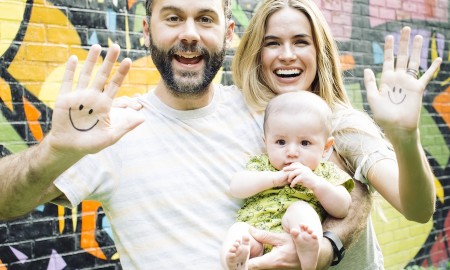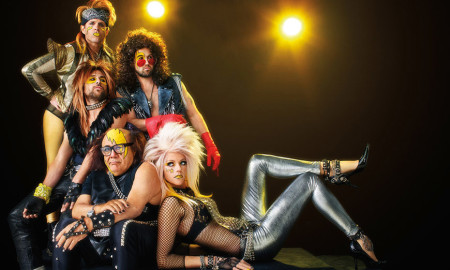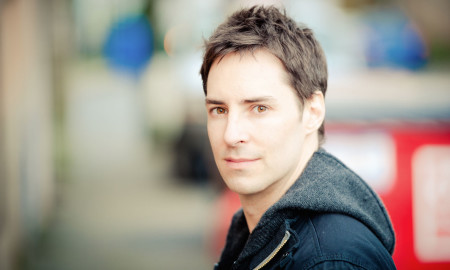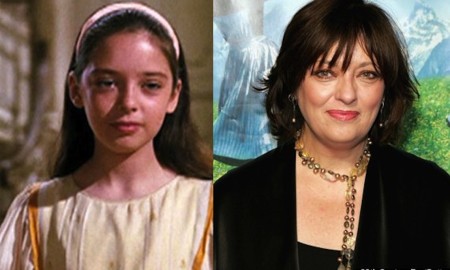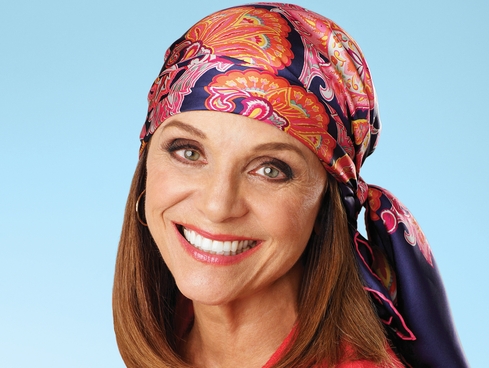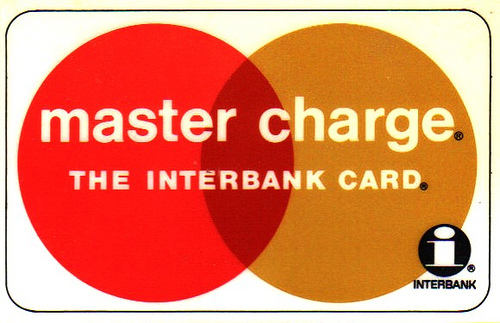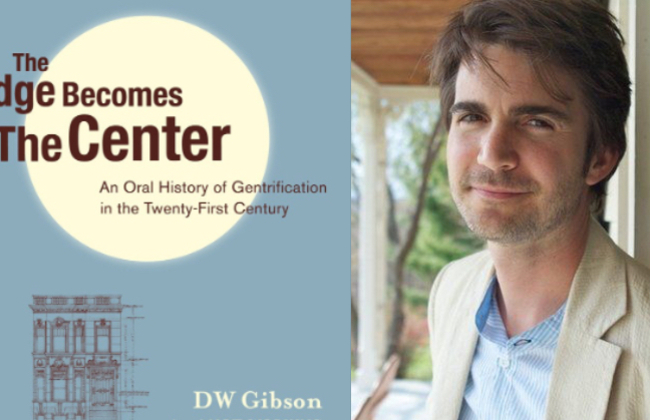

Gentrification: Lick your finger, stick it in the winds of change, and you know it’s happening everywhere (or it’s coming to a neighborhood near you). Formerly humble, aging or dangerous hoods are now heart-beating with a homey, hip vibe; the sentimental stories of once-dirt-cheap rents have become the stuff of urban lore.
You know the drill: Roving gangs are replaced by baby strollers, bodegas with Starbucks, abandoned Fords with brand-new BMWs, fast food with pricey outdoor cafes. Deteriorating housing stock is rehabbing and retrofitting into magazine-worthy fabulousness, public schools are rising from worst to first, and vacant lots are evolving into community gardens of Eden.
Sounds lovely, but is it always a good thing? What of the longtime neighbors who can no longer afford to live in Gentrification Land? Where do they go? Why can’t they stay? And how much is too much (especially when it comes to rent)?
The elephant in the rehabbed room (with polished, hardwood floors!) starts charging in D.W. Gibson’s outspoken tour of gentrification, The Edge Becomes the Center: An Oral History of Gentrification in the Twenty-First Century. Gibson, who describes gentrification as “violence,” shows what happens when the upper-middle class forms a conga line, rents soar, cultures clash, investors smell blood, and real estate gets hyped.
Gibson elaborates here, and adds that he even has a problem with the word “gentrification” itself.
Dig:
Gentrification feels new, but it’s not a new concept.
Gentrification is something that several generations have experienced. It changes over time and space, and from neighborhood to neighborhood and city to city.
Is gentrification a dirty word? Is it code for a form of racism or elitism?
Very few people I’ve talked to have had positive associations with the word. In some contexts, it could be a positive word, but the shortest chapter in the book is about a politician who wouldn’t even say the word. It’s a toxic word for public officials.
We mainly define the word in the context of its underbelly, which is displacement — the thought and the reality that some people are made to leave their homes and businesses because of the tide of money that comes with the [gentrified] neighborhood. No one likes that thought. Some people define gentrification along those terms. For that reason, it’s a very toxic word for a lot of people.
There is an old-fashioned and politically incorrect real-estate adage: “Follow the fairies.” This means that gay people were often the first to enter a decaying neighborhood and turn it around. Is this pattern no longer true?
It was an interesting example that illuminates the contemporary circumstances. This idea of DINKs [double income, no kids] is often a default for the gay population, but not exclusively. I talked to people in Chelesa [Manhattan] who mention this. You don’t see this as much anymore, and I do think it speaks very precisely to the dynamics we’re facing now. In the ’90s, let’s say, you may have had those kind of individuals moving into a neighborhood and bringing money and changing energy.
Who are today’s gentrifers?
The entities and the people who bring money to a neighborhood now are not end users like that — the people looking for a home to live in. People bringing money to a neighbhorhood now are more like investment fund groups, hedge funds based in London or Dubai or different countries. They’re not necessarily interested in the energy or the composition of the neighborhood. They’re interested in the rent roll, the capital capacity. It’s a totally different dynamic from upper-middle-class people moving into a neighborhood and bringing money into it. It’s more about how much rent they can squeeze out of that square footage.
You mention in your book that humankind loves a place where they can stop and have a beverage. I guess this is why Starbucks and other coffee shops are sure signs of neighborhood gentrification. Bars too.
Particularly the coffee shop. In Harlem, there are a couple of real-estate agents who have opened coffee shops so they can point to them when they bring prospective buyers to the neighborhood. Middle-class and upper-class buyers can point to it and say, “Hey, look!” Here’s where you can be comfortable. It feels like something that can make people feel safe and feel at home in short order. It is a really important signifier.
Appraisers must really be crazy busy in a neighborhood that’s on the verge of economic and cultural change. The house values must bounce all over the place.
Appraisals are always behind the actual market values. It’s just the way things work because the work has to get done and you have to get established, so you are always going to have people willing to pay. The market is going to be reacting way above whatever is actually on paper in terms of an appraisal value.
Gentrification then means different things to different people, not always exclusively good or bad.
Again, I think it’s a word that has become so loaded, and this happens to language. There are words that we use for generations, and it accumulates baggage. The word itself is largely unhelpful, but we needed a shorthand; otherwise every conversation is going to take ten minutes to unpack.
By and large, I think we need to get more precise about what we are talking about when we’re talking about gentrification. Are we talking about the influx of capital? Are we talking about displacement? Are we talking about the loss of small businesses that have stronger ties to the community? The more precise we can get, the better off we’re going to be, as opposed to talking to this much more abstract idea that is gentrification.
Do some neighbohoods make no secret about their desire to gentrify? In those cases, the current residents must know that change is coming and they may not continue to be welcome.
The thing that very few people reject is the possibility of an improved streetscape, improved amenities for the neighborhood, more beautiful streets. No one really says no to that.
Even the people who fear displacement know that with a more beautiful street and better amenities, the neighborhood is going to become more expensive and they may not be able to stay. They still welcome those changes because they’re positive changes. Who doesn’t want a beautiful street to walk down? Who doesn’t want a hardware store around the corner and a grocery store with a good selection of vegetables? Everyone welcomes that.
The problem is: How do you create that change and allow for people who have been in that neighborhood for decades when all of those things weren’t there? How do you allow for those individuals to remain stakeholders and remain an important part of the community?
With so much gentrification happening, The American Dream seems to be shifting into reverse. It’s no longer about the suburbs. Especially among Millennials, the dream is to be in a hip, urban environment, with public transportation and bike paths. They prefer renting apartments to buying houses, and want to live near where they work.
How we define The American Dream is changing. It’s no longer so suburban oriented. [However], you can boil down The American Dream to homeownership — the white picket fence. But I think it’s even more precise than that. It’s the idea of land ownership. It’s this idea of this one little patch of earth, and it might be a ground floor or it might be fifty stories in the air, but it’s mine.
That’s the real core of The American Dream. That core is still there; what’s shifted is the way we view modern living and the realities of sustainability. The urban landscape offers a lot of tools for sustainability and just cultural invigoration.
Is this Millennial back-to-the-city movement overblown? Does the trend belong exclusively to entitled kids who can afford higher rents?
I don’t think it’s overblown, but I think it deserves a little more precision. Places like New York, Los Angeles, San Francisco, and even Austin do have an elitist vibe to them because things are so expensive.
But consider the opportunities for Millennials willing to move to Detroit or willing to move to Knoxville, TN, those second-tier American cities that offer really low rents and really low ceilings for getting in as owners. There are really great urban environments where that is a possibility, for a lot less money. There is a range going on in American cities right now.
Does every neighborhood have gentrification potential?
Certain neighborhoods have a lot more. There are really strong across-the-board signifiers for the potential.
The most obvious ones involve the nature of housing. Neighborhoods like Bedford Stuyvesant [Brooklyn] have beautiful brownstones that would be attractive to people with money willing to rehabiliate them.
Transportation is another factor.
Then there is a third factor, which is the quantity of space. A place like Bushwick [Brooklyn] comes into play here. Bushwick has been driven largely by artists looking for bigger space. Artists tend to look for bigger spaces to occupy for work and living. In those cases, you open yourself up to places like Bushwick that may not offer attractive housing stock across the board, but does in fact offer that space.


